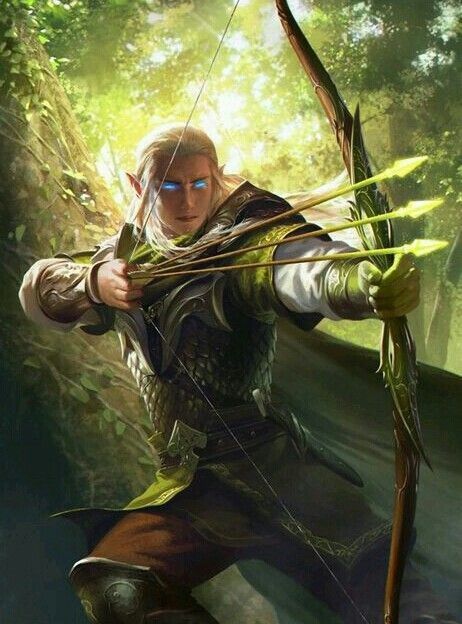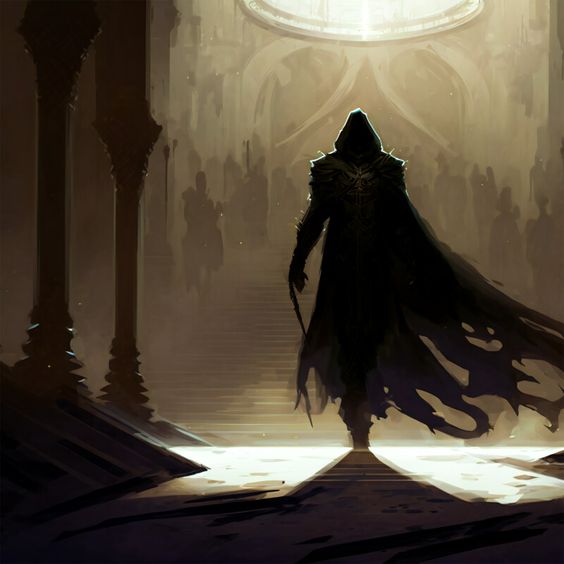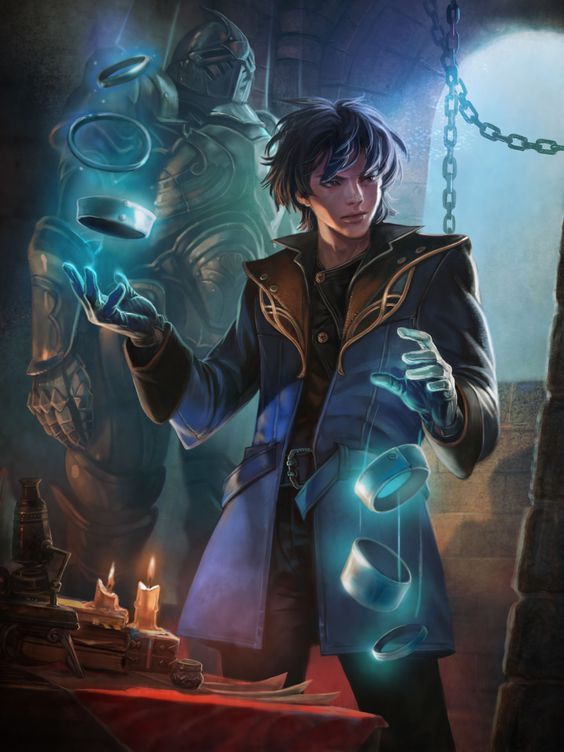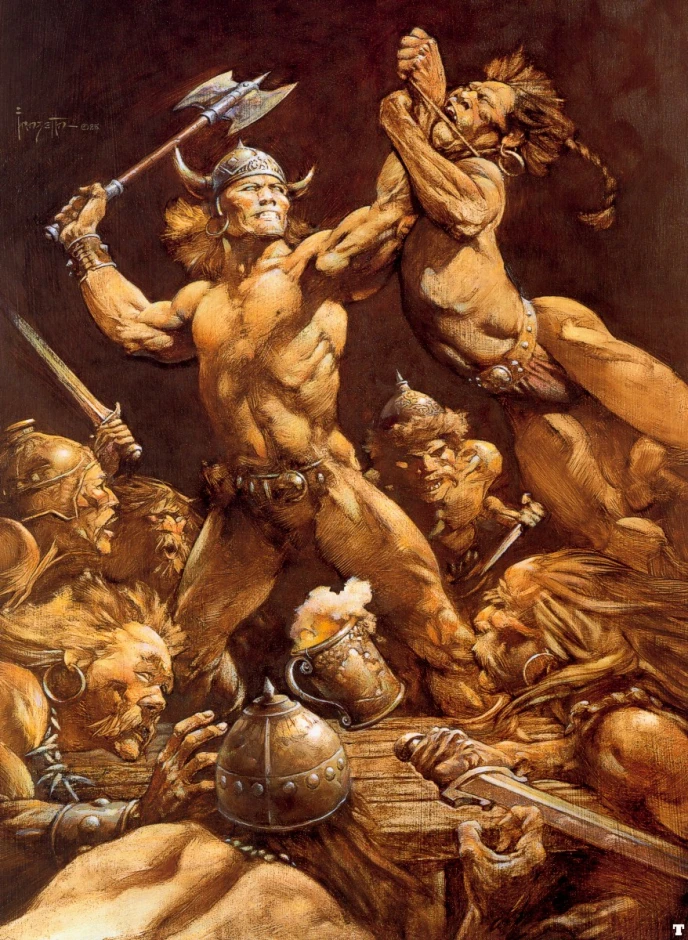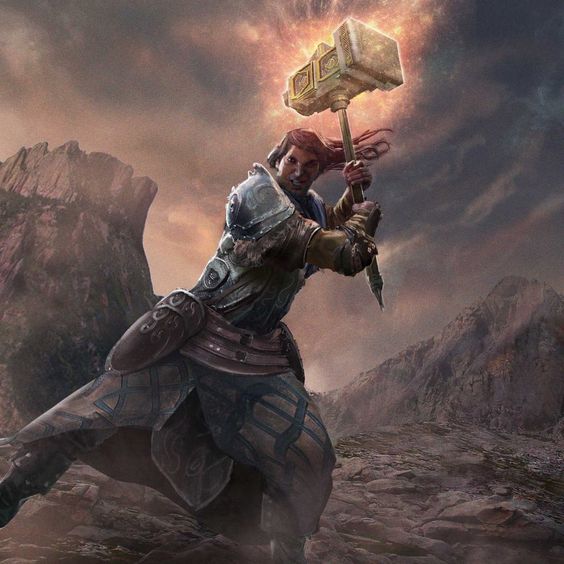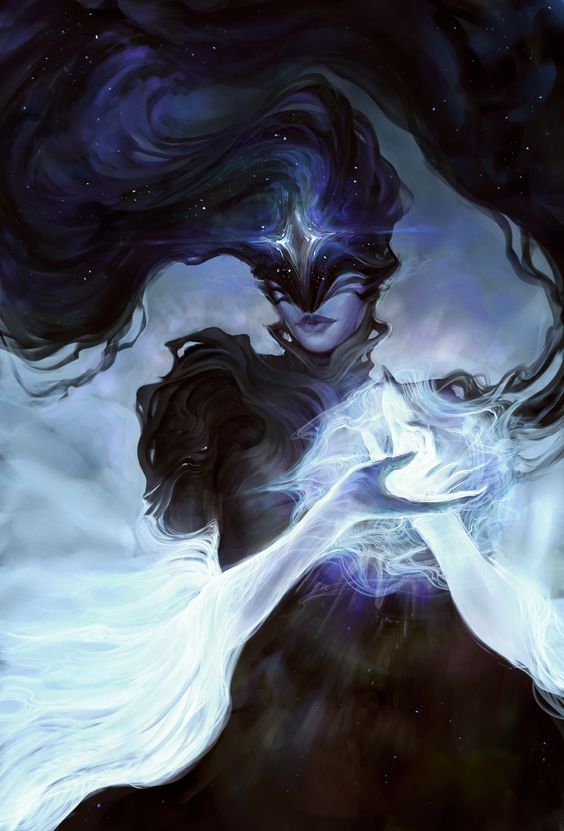D&D 5e: Never Miss the Mark: The 5e Sharpshooter Feat Guide

D&D 5e: Never Miss the Mark: The 5e Sharpshooter Feat Guide
SOURCE: Player’s Handbook
Rating the Benefits of Sharpshooter
Benefit #1-
Attacking within a ranged weapon’s long range band doesn’t impose disadvantage
Attacking at long range is an automatic disadvantage on the attack roll. The Sharpshooter feat ignores that issue, making it much easier to attack without negative penalties, no matter your range bracket.
Benefit #2-
All your ranged attacks ignore half and three-quarters cover
Cover is the bane of ranged attackers. Half cover gives a +2 to AC, and three-quarters cover is a hefty +5. Sharpshooter automatically ignores both, increasing your hit chance by up to 25%, obviously a significant benefit
Benefit #3 –
When making an attack, you may take -5 to the attack roll to add +10 to your damage
This feature adds a huge damage bonus at the cost of a significant attack penalty. Ranged attacks can be easier to hit than melee, but tend to be lower in round-by-round damage. If you can take the hit penalty, the Sharpshooter feat can effectively double your overall DPR.
Mechanics and Requirements
How Does the Sharpshooter Feat Function?
The Sharpshooter feat offers three benefits, which do three very different things:
Ignoring the long range disadvantage penalty
Every ranged weapon in D&D 5e has two ranges in its stat block. For example, the range section of the stat block for the short bow looks something like this.
(range 80/320)
The first number, in this case, 80, is the short range of the weapon in feet. 5e divides its maps into 5ft square increments, so you can consider a short bow to have a short range of 80 feet, or 20 5ft squares. Attacking within this range confers no special advantages or disadvantages. It’s the range a weapon is expected to be used within.
The larger, second number is the weapon’s long range, with 320ft being the absolute maximum you can make an attack roll within.
Normally, attacking within your weapon’s long range forces you to roll with disadvantage. The Sharpshooter feat lets you completely ignore that, so you can now attack up to the maximum range of this weapon as easily as you could fire at someone 10ft away.
Why is this useful? Two reasons:
Firstly, many weapons have surprisingly restrictive long range bands. The short bow, for example, can fire up to 80ft without issue, but many encounters can take place over much further distances, especially against flying opponents or other ranged enemies.
It’s worse if you’re using throwing weapons or hand crossbows, which only have a short range of around 30ft, meaning any attacks aimed at an enemy further than 6 squares away would be made with disadvantage.
Second, Sharpshooter allows you to use the long range of your weapon to its full potential. A longbow has a mighty maximum range of 600ft, and you can freely attack enemies within that range with absolute impunity.
An enemy with a speed of 30ft, using their action to dash towards you would take 10 turns to reach you. 10 turns where you get to full attack without issue.
While admittedly this is an unlikely, perfect, scenario, it’s easy to imagine situations where the ability to reach out several hundred feet with lethal damage can’t be a good thing to have in the pocket.
Ignoring cover
There are three types of cover in 5e. Half cover, three-quarters cover, and total cover. Cover is granted by any obstacle that is between the creature making the attack, and the target of that attack.
Understanding half-cover and three-quarters cover is pretty straightforward. If more than half of a creature is covered by an obstacle, ie, if your character can’t see that portion of what they’re firing at, their target gains half cover, which is a +2 bonus to their AC.
Three-quarters cover is the same, except more than three-quarters of the target must be concealed, and the AC bonus is +5. (Creatures gaining a cover bonus to AC also gain the same bonus to Dexterity saving throws, if that’s important.)
The Sharpshooter feat flat out ignores both of these types of cover, meaning enemies no longer gain a bonus to AC from hiding behind basically any kind of cover when you’re firing at them.
This is absolutely massive. Let’s take a quick, illustrative example. Your party is fighting a goblin ambush in a forest. Your turn comes, and there are three goblins in range:
Goblin A is in some bushes, throwing sharp stones. Half his body is obscured. Half cover. +2 AC.
Goblin B is hiding behind a tree with a shortbow, leaning out on his turn. The tree protects most of his body, with only a fraction of him visible. He has three-quarters cover. +5 AC, making him incredibly difficult to hit.
Goblin C is in trouble, surrounded by two of your party members. However, they’re also obscuring your sight lines, making it hard to draw a direct line to him. Because of this, Goblin C also gets half cover. +2 AC.
Without Sharpshooter, all three Goblins have cover from you. There are no good targets.
With the Sharpshooter feat, how many of these Goblins have cover and an AC bonus?
That’s right. None of them. As long as you can see any part of your targets, you can fire at them without penalty.
This leaves only the last type of cover; total cover.
Total cover is gained when a creature cannot see its target at all. For example, an enemy standing behind a door that’s open a fraction has three-quarters cover, but a closed door is total cover.
This is important because AOE attacks can still potentially hit a creature in total cover, but attacks and spells that require a visible target cannot.
The Sharpshooter feat does not let you target an enemy in total cover.
Massive Damage
The final part of the Sharpshooter feat is the ability to take a -5 penalty to attack rolls to gain a +10 bonus on your damage rolls.
You decide whether to take this penalty before you attack, meaning that you can choose when to apply the bonus to deal maximum damage.
Let’s put this into perspective, so you can understand how large this bonus is.
A longbow deals 1d8 damage, with an average expected value of 4.5, plus your character’s Dexterity bonus, with a maximum value of 5.
This means, with 20 Dex, the average damage roll from a longbow is 9.5, with a minimum of 6 and a maximum ceiling of 13.
Sharpshooter raises that to an average value of 19.5, with a minimum of 16 and a maximum of 23, effectively doubling your damage for every single shot. Of course, the math is a lot more complicated than that, especially once you factor in the attack roll penalty.
Our level 3 Fighter, Tilliam Well, is using his longbow against some Ogres, (CR2, AC11, 59 HP.)
Tilliam is a smart fighter, so he took the Archery fighting style, and at level 3 has a Dexterity score of 16, so he has a +7 bonus to his attack rolls. He attacks twice.
Without Sharpshooter, he needs to roll a 4 to hit his target, an 85% chance, which means his expected damage per round from his two attacks is 12.75.
(4.5+3 per attack, attacking twice, then multiplied by the 85% hit chance)
With Sharpshooter, he needs to roll a 9 to hit his target. His hit chance drops to 60%, but the damage per hit rises dramatically. His expected damage is now 21 per round, a 65% increase.
However, the variance in his damage also rises. Despite dealing much more damage on average, he has a 40% miss chance per attack, so every 1 in 5 rounds, Tilliam deals literally 0 damage as both of his shots miss completely.
On top of this, as enemy AC rises, so does the miss chance. Against high AC enemies, the penalty from Sharpshooter can actually cause us to lose damage. For example, our chance to hit a foe with an AC of 19 is 40% without the penalty, and only 20% with it. We’re doubling our damage, true, but we’ve dropped our chance to hit by exactly the same percentage, and our chance to whiff completely is far higher, so using the Sharpshooter feat simply isn’t worth it.
A good rule of thumb is not to use the Sharpshooter damage bonus unless you need to roll a 10 or less to hit your target. With that said, there are many ways for a character to increase their hit chance further or lessen the penalty, for example by gaining Advantage or simply throwing out more attacks. Sound good? We aim to please. More on this later in the article.
Key Stats
While the Sharpshooter feat has no stat requirements, most characters who want to make effective use of the feat, and be effective in combat in general, will be looking to maximize their Dexterity bonus.
Almost all ranged weapons use Dexterity for both attack and damage rolls, making it the single most important stat for anyone using a bow or crossbow. On top of this, your Dexterity bonus also adds to AC, which makes the character harder to hit, is tied to an important and widely rolled saving throw, and also dictates your ability in several useful skills, many of which, such as Stealth, are valuable for ranged characters.
A few niche throwing weapon builds might choose to pump Strength, especially if they’re leaning into melee as well as ranged attacks, as some throwing weapons can be used with Strength instead of Dexterity.

Ideal Character Builds for the Sharpshooter Feat
Top Classes
Fighter – For ranged Fighters, no feat adds more round-by-round damage than Sharpshooter. The class gains instant access to the Archery fighting style at level 1, which helps offset the -5 to hit with a permanent +2 bonus. No class gains as many attacks per round as the Fighter, and on any turn where the character has further bonuses to hit, they can Action Surge to double the number of arrows they shoot.
Certain subclasses make this even stronger. The Samurai subclass especially loves using a longbow, able to spend their Bonus Action on Advantage for all of their attacks, multiple times per day. Battle Masters are also excellent, able to use Precision Attack on attacks that narrowly miss, as well as stack disabling status effects at range.
Ranger – Rangers also have access to the Archery fighting style, as well as spellcasting and other class features necessary to make an effective ranged attacker.
Gloom Stalkers especially love this feat, gaining a bonus attack on the first round of every combat, as well as being superlative masters of stealth, able to drop a hail of arrow attacks with Advantage out of the darkness, then disappear to do it again a turn later.
Artificer – Certain Artificer subclasses want to be standing at the back of the battlefield, firing arrows downrange, supporting their party with magic and mechanical companions.
The main reason to consider this combination is the Artificer’s Infused Items feature, which lets you turn your bow into a magic weapon far sooner than other party members gain access to anything similar, offering a large boost to hit and damage rolls. A Battle Smith standing behind his Steel Defender, pouring bolt after devastating bolt into enemies, is a truly terrifying foe.
Rogue – The Rogue class might seem like a good candidate to take the Sharpshooter feat, but this is actually a trap choice. Without multiclassing or other off-meta builds, Rogues only ever get to make one ranged attack roll per turn.
Most of the class’s damage comes from Sneak Attack, which equals the Sharpshooter bonus damage from as early as level 5, doubled on any critical hits. You need your one attack to land, so reducing your chance to hit on a single roll just isn’t worthwhile. Look for ways to increase your hit chance, instead.
Multiclassing Considerations
Fighter: A dip into Fighter is a powerful multiclass choice for any martial character. The main benefit is the fighting style, (take Archery if you don’t already have it. Defense is a great secondary option.) You also gain a bonus action short rest heal, which adds up deceptively fast over several adventuring days.
Taking a second level offers the almighty Action Surge, enabling you to double the number of attacks you make for a round once per short rest.
Pushing for three levels adds a Martial Archetype, many of which bring a suite of powerful attacking options of their own. More than three levels aren’t recommended.
Race and Subrace Choices
Sharpshooter doesn’t rely on or need any particular race to function. The closest thing to a recommendation here is any kind of Elf. One, most Elves come with automatic proficiency in bows if you don’t already have them, which are mechanically perfect for the Sharpshooter feat.
Two, Elves have access to a second, powerful feat that synergizes perfectly with Sharpshooter: Elven Accuracy.
Combos, Tactics, and Synergies
Complementary Feats
Crossbow Expert: Listen, you take this feat if you want to create a character that uses one particular build. Let’s call it the John Wick.
First, find the gold to purchase a pair of Hand Crossbows. Crossbow Expert lets you ignore the Loading quality of weapons, meaning you can fire as many bolts per turn as you have attacks, even when you’re holding a crossbow in each hand (however that works.)
The feat also allows ranged attacks within 5ft without disadvantage, so you can safely fire within melee range.
But the real reason we’re here is the bonus action attack for having a secondhand crossbow, adding another attack roll every turn. While the damage from hand crossbows is low (d4) we’re looking to maximize the number of attacks we make for that sweet sweet +10 damage bonus for every bolt that lands. Firing 50% more bolts per round obviously helps with that.
Elven Accuracy: Half an ASI is nice. Rerolling one of the attack dice whenever you attack with Advantage is disgustingly powerful. As we mentioned above, if you’re an Elf, you should take this.
Lucky: The Lucky feat is almost always a good choice for any build. Rolling an extra dice on your saves, skill checks, and attacks, three times per day? Forcing an enemy to roll another dice to hit you and choosing the lowest? Yes, please.
Also worth noting, this looks like Advantage, but it isn’t. That means, yes, if you have Advantage from another source you can potentially roll three dice and take the best result.
Piercer: MORE damage. Once per turn, reroll a damage dice, and also add an extra damage dice on crits. Basically, every major ranged weapon deals piercing damage, which means they automatically qualify for these bonuses.
While this feat is mathematically less efficient than just taking an ASI for Dexterity, if you’ve already maxed out your Dex score or you have a free feat from another source, it’s definitely worth grabbing.
Spells that Synergize
Bless: Bless was already an incredibly powerful spell for a party, adding 1d4 to every attack roll and saving throw for up to three characters. Putting this on a character who deals a bonus +10 damage on every attack, with the only negative being a hit penalty that this spell can all but completely ignore, feels a little unfair.
Magic Weapon: A flat +1 to hit and to damage is a solid buff, especially if you’re fighting enemies that have resistances and you don’t already have a real magic weapon.
Other spells might be flashier or stronger, but Magic Weapon lasts an entire hour and provides a solid, dependable buff.
Haste: Faster movement, a bonus to AC, and a free attack once per turn are a powerful suite of buffs for any archer. Just make sure the person who cast this on you is protected, as you lose an entire turn if they fail concentration and the spell drops.
Maximizing the Effectiveness of the Sharpshooter Feat
The Archery Fighting Style: Possibly the biggest bonus for any ranged attacker is finding a way to grab the Archery fighting style. The flat +2 to hit it confers translates to a massive 10% increase in attack efficiency, which generally means the archer is going to be hitting far more often than the rest of the party.
Many classes gain fighting styles as part of their class bonuses. For characters that don’t, a 1 level multiclass dip into Fighter or the Fighting Initiate feat are easy ways to grab it.
Taking Advantage: Besides a flat bonus, Advantage is one of the biggest ways to ensure that your attacks are landing.
Party members applying disabling conditions like Stunned or Paralysed, class options like the Samurai’s Fighting Spirit, and attacking while unseen from Stealth are all reliable ways to get that all-important double dice roll.
Choosing the right targets: 5e challenge rating is a tricky beast. Monsters and encounters can differ wildly at every level, with different enemies balanced around having more HP, higher AC, or strong saves.
If an enemy already has high AC, (imagine your stereotypical knight in full plate) adding a negative modifier to your hit rolls is probably a bad idea, as landing any damage at all is better than missing all of your attacks. The opposite, enemies that are basically large, easy to hit walls of meat like ogres and giants, are the perfect time to slam the Sharpshooter bonus on every attack you make.
Cover, your enemies, and you: One underutilized part of the Sharpshooter feat is the ability to flat out ignore cover. At first glance, this sounds useful for ignoring enemies who try to hide from you.
But what if it also meant you could hide from them?
A large consideration with ranged attacks is positioning. As we mentioned earlier, another body between you and your target confers cover. So does a wall, rough terrain, and bushes. Almost anything can be considered cover if it hides a portion of the target.
Now, Sharpshooter ignores cover for the target of your attacks, but nothing says you can’t still gain the benefits of the cover you’re ignoring when you attack. This means you can freely position yourself behind a bush, for example, or another place that’s particularly difficult for your enemies to deal with. They’ll find it incredibly hard to hit you with anything, all the while you’re constantly launching unimpeded attacks straight at them.
Final Thoughts for Sharpshooter
The Sharpshooter feat is probably near-essential if you’re planning on building an effective and efficient ranged character.
Firstly, the amount on offer from the feat, three separate and useful effects, is huge, especially compared with equivalent feats such as Great Weapon Master. Second, the feat lets ranged attackers essentially ignore anything that puts negative modifiers on their attack rolls. (Except the ones that apply to themselves.)
But what is most important is the ability to switch on what amounts to double damage per attack, for a surprisingly low cost against correctly chosen targets.
Let’s be serious, any martial character that makes multiple ranged attacks per combat round is eventually going to want to take the Sharpshooter feat. It’s that powerful.


